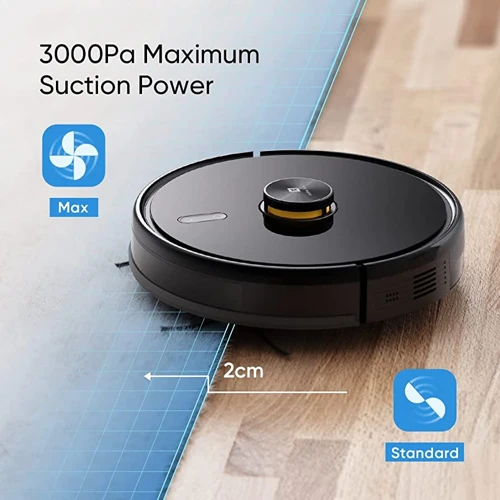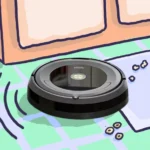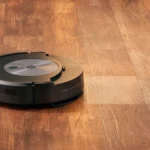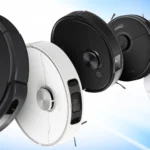As smart home technology continues to advance, there are few household appliances as revolutionary as the smart vacuum cleaner. These futuristic devices offer unparalleled cleaning power and efficiency, but how do they navigate your home without falling down stairs or off ledges? The answer lies in the technology behind drop sensors, which play a critical role in the safe and effective operation of these high-tech cleaners. In this article, we’ll explore the different types of drop sensors used in modern smart vacuum cleaners, and take a closer look at how they work to prevent damage and keep your floors safe. So buckle up and get ready to dive deep into the fascinating world of smart vacuum cleaner technology!
What are Drop Sensors?
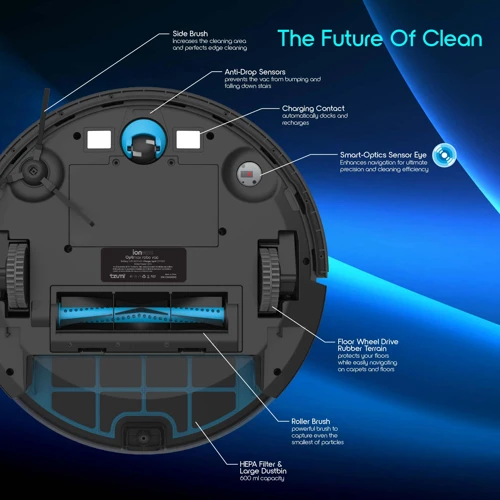
As we witness a rapid transformation in the way we clean our homes, smart vacuum cleaners hold an important place in the market. These gadgets are equipped with a variety of advanced features, among which are the drop sensors. Drop sensors are the small yet significant components in smart vacuum cleaners that help prevent accidents and damage to the device. If a smart vacuum cleaner fails to incorporate these sensors, it may not perform as efficiently as the ones that have them installed. In this comprehensive guide, we’ll dive deep into this technology to understand why they are essential and how they work.
Check out more information about drop sensors in smart vacuums to see how manufacturers make use of this feature to provide users with a safer cleaning experience.
How do they work?
Drop sensors in smart vacuum cleaners work by detecting changes in surface elevation. They are designed to sense when the device is about to fall or drop off an edge, such as a staircase or balcony. The sensors emit signals that bounce off surfaces and return to the vacuum cleaner. If the signal does not return, the device recognizes that there is no floor below and immediately changes its direction.
There are different types of drop sensors, including mechanical, infrared, camera-based, ultrasonic, and cliff sensors. Mechanical sensors are essentially switches that trigger when the vacuum cleaner rolls off an edge. Infrared sensors use light waves to detect changes in elevation, while camera-based sensors utilize a camera to capture images of the space around the device. Ultrasonic sensors emit high-frequency sound waves that bounce off surfaces and return to the device. Cliff sensors, on the other hand, detect the changes in air pressure when the device approaches a drop and are particularly useful in preventing falls down staircases.
Drop sensors are critically important for the safe operation of a smart vacuum cleaner. They ensure that the device is aware of its surroundings and avoids any potential hazards, protecting both the vacuum cleaner and the furniture, stairs and floors around it.
In smart vacuum cleaners without drop sensors, there is a high risk of them falling down stairs or off balconies which could cause serious damage, injury or even death. For that reason, it’s important to only consider purchasing a smart vacuum cleaner with appropriate drop sensor technology.
Smart vacuum cleaners with drop sensors like Roomba and other models are among the top-rated devices on the market. They have been designed to ensure that they can operate in a wide range of environments and detect changes in elevation to avoid any damage or accidents around the home. If you’re considering purchasing a smart vacuum cleaner, make sure to consider one with drop sensor technology for your peace of mind and safety.
Importance of Drop Sensors in Smart Vacuum Cleaners is crucial when making a decision about purchasing a smart vacuum cleaner as they ensure the safe and seamless cleaning of your home. However, before making your final purchase, you need to be aware of the limitations of drop sensors which will be discussed in the following section of this article.
Why are they Important?
Drop sensors are an essential aspect of smart vacuum cleaners. These sensors ensure that the vacuum can navigate around obstacles and prevent falls from cliffs or stairs. Without drop sensors, a smart vacuum cleaner would be unable to operate safely and efficiently.
Here are a few reasons why drop sensors are incredibly important for smart vacuum cleaners:
- Preventing falls and damage: One of the main reasons why drop sensors are essential is that they prevent falls and potential damages. These sensors work by detecting a change in elevation, which can indicate the presence of stairs, cliffs, or other drop-offs. This feature is critical as it ensures that the vacuum cleaner doesn’t accidentally fall down the stairs or off a second-story balcony.
- Efficient cleaning: Drop sensors’ ability to detect changes in elevation means that the vacuum cleaner can operate efficiently while cleaning. The sensors will detect obstacles and ensure that the vacuum cleaner avoids them, allowing it to clean around and underneath furniture without getting stuck or causing damage. This aspect helps in saving time and energy invested in cleaning.
- Convenient and easy to use: With drop sensors, smart vacuum cleaners are convenient and easy to use. They can navigate around objects and clean without any intervention, making it an excellent option for busy households. This feature is perfect for older people, making them an ideal choice for today’s lifestyles.
- Improved durability: The presence of drop sensors in a vacuum cleaner increases its durability significantly. Since the sensors help to prevent fall or damage, it directly reduces the wear and tear of the device.
- Child and pet friendly: Smart vacuum cleaners with drop sensors are perfect for households with children and pets. With these sensors’ help, smart vacuums prevent accidental falls and damages, ensuring a safe and secure space. You can rely on the cleaner to protect your young ones and furry friends against potential accidents.
Having established the importance of drop sensors, it is interesting to note that there are smart vacuum cleaners without this feature. Such devices are cost-efficient but may not guarantee the safe cleaning experience that a smart vacuum cleaner with drop sensors can provide. It is essential to consider the presence of drop sensors when looking for buying a smart vacuum cleaner. Check out our guide to the top smart vacuum cleaners with drop sensors to consider.
Types of Drop Sensors
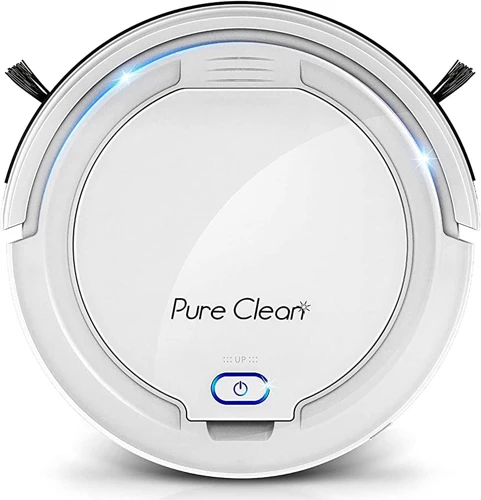
As we delve deeper into the technology behind drop sensors in smart vacuum cleaners, one of the most crucial elements to understand are the various types of sensors available in the market. These sensors come in different shapes and sizes but share the same mission of preventing your smart vacuum from tumbling off the stairs or edges, leading to breakage or even worse, accidents. Here are some of the types of drop sensors commonly used in smart vacuum cleaners: mechanical sensors, infrared sensors, camera-based sensors, ultrasonic sensors, and cliff sensors. Each has its own unique features and capabilities, making them suitable for specific use cases. Let’s explore each type in more detail. If you’re interested in smart vacuums that don’t use drop sensors, check out our article about smart vacuums without drop sensors.
Mechanical Sensors
Mechanical sensors are the oldest technology used in smart vacuum cleaners to detect drops and prevent accidents. These sensors work on a simple principle – they consist of a lever attached to a spring. When the vacuum cleaner moves near a drop-off, the lever drops, triggering an action that signals the vacuum cleaner to stop.
The advantages of Mechanical Sensors are:
- They are low-cost and easy to manufacture using commonly available materials
- They are reliable and work effectively in most environments
- They can detect drops of various sizes and shapes, providing accurate measurements
The disadvantages of Mechanical Sensors are:
- They have limited accuracy and may not be able to detect very narrow drops or gaps
- They can be affected by dust and debris, which may cause them to malfunction
- They make noise when triggered, which may disrupt the vacuum cleaner’s cleaning cycle
- They may require periodic maintenance and cleaning to ensure they work effectively
While mechanical sensors may not be the most advanced technology available, they remain a reliable and cost-effective way to detect drops and prevent accidents when using a smart vacuum cleaner.
Infrared Sensors
Infrared sensors are another type of drop sensor commonly used in smart vacuum cleaners. They work by emitting infrared light and then measuring the time it takes for the light to reflect back to the sensor. This allows them to detect if there is an object or a drop-off in front of the vacuum cleaner.
The Pros and Cons of Infrared Sensors
Infrared sensors are a popular choice for several reasons. First, they are relatively cheap and easy to manufacture, making them a cost-effective option for manufacturers. Second, they are lightweight and compact, which is important for fitting them into small devices like robot vacuum cleaners. Lastly, they are quite accurate and can detect small drops or objects in front of the vacuum cleaner.
However, there are also some limitations to infrared sensors. For example, their accuracy can be affected by the color and reflectivity of the surface they are trying to detect. They may also have trouble detecting drops in low-light conditions. Additionally, they are not always effective at detecting clear or transparent surfaces like glass or acrylic.
The Comparison of Various Sensors Used in Smart Vacuum Cleaners
To better understand the pros and cons of infrared sensors, let’s compare them to other types of sensors commonly used in smart vacuum cleaners.
Sensor Type | Pros | Cons
———— | ————- | ————-
Mechanical Sensors | Good for detecting steep drops | Can wear out over time and be expensive to replace
Infrared Sensors | Accurate and can detect small drops or objects | Accuracy affected by surface color/reflectivity, may have trouble in low-light conditions, ineffective on clear surfaces
Camera-based Sensors | High accuracy and can detect a variety of obstacles | Require a lot of processing power and have a high cost to manufacture
Ultrasonic Sensors | Long-range detection capabilities and good at detecting certain materials | Not as accurate at detecting small drops or objects
Cliff Sensors | Highly accurate at detecting drops | Can be expensive and difficult to manufacture
As you can see, each type of sensor has its own strengths and weaknesses. Manufacturers must carefully consider their options and choose the type of sensor that is best suited for their particular vacuum cleaner model.
Infrared sensors are an important component of drop sensors in smart vacuum cleaners. While they do have their limitations, they remain a popular choice due to their cost-effectiveness and accuracy in detecting small drops or objects. By understanding the different types of sensors available and their pros and cons, you can make an informed decision when purchasing a smart vacuum cleaner for your home.
Camera-based Sensors
One of the latest technologies used in smart vacuum cleaners are camera-based sensors . These sensors can detect the floor and the obstacles around the smart vacuum cleaner. They work by capturing images of the surrounding area and then processing them to determine the distance between the vacuum cleaner and the obstacles.
In camera-based sensors, a camera is installed on top of the device, facing downwards. The camera takes pictures of the floor and the surrounding area at regular intervals. These images are processed using complex algorithms, which analyze the distance between the vacuum cleaner and the obstacles.
Here is an HTML table summarizing the advantages and disadvantages of camera-based sensors:
| Advantages | Disadvantages |
|---|---|
| Can detect obstacles accurately like walls, furniture, and other objects as they are able to pick up the colors of the objects around the room | May not detect transparent obstacles like clear glass or plastic |
| Higher accuracy than other types of sensors, allowing the vacuum cleaner to more easily navigate its surroundings | Require good lighting conditions to function effectively. Poor lighting can cause the camera to miss obstacles or make mistakes in detection |
It is worth noting that camera-based sensors are still relatively new, and their effectiveness can vary depending on the quality of the camera and the algorithm used for image processing. Some smart vacuum cleaners using camera-based sensors have a learning feature that allows them to improve their navigation and obstacle detection abilities over time.
Ultrasonic Sensors
Ultrasonic sensors are another type of drop sensor commonly used in smart vacuum cleaners. These sensors use high-frequency sound waves to detect drops in the floor and prevent the vacuum cleaner from falling down.
How do they work?
An ultrasonic sensor emits high-frequency sound waves in the range of 20 kHz to 40 kHz, which are inaudible to the human ear. These sound waves travel through the air and bounce off any object they encounter, including the floor. The sensor then measures the time taken for the sound wave to return after bouncing off an object. Based on this time, the sensor can determine the distance to the object.
Why are they important?
Ultrasonic sensors are highly accurate and can detect even the smallest drops in the floor. They are also effective on all types of surfaces and can work well in bright or dark conditions. They are often used in combination with other types of sensors, such as infrared and cliff sensors, to provide comprehensive drop detection.
| Advantages | Disadvantages |
|---|---|
| – Highly accurate | – Limited detection range |
| – Effective on all types of surfaces | – More expensive compared to other sensors |
| – Can work well in bright or dark conditions | – Can be affected by obstacles in the path of the sound waves |
Limitations of Ultrasonic Sensors
One of the main limitations of ultrasonic sensors is their limited detection range, which typically ranges from 1 to 3 meters. This means that the vacuum cleaner may not be able to detect drops that are further away than this range. Additionally, obstacles in the path of the sound waves can interfere with the accuracy of the sensor.
While ultrasonic sensors are highly accurate, they are also more expensive compared to other types of sensors. Manufacturers need to balance the accuracy requirements of their customers with the cost of incorporating ultrasonic sensors into their vacuum cleaners.
Ultrasonic sensors are a highly accurate and effective type of drop sensor commonly used in smart vacuum cleaners. They have their limitations, but their accuracy in detecting drops makes them a valuable addition to any smart vacuum cleaner.
Cliff Sensors
Cliff sensors are another type of drop sensor used in smart vacuum cleaners. They are designed to prevent the vacuum cleaner from falling off stairs or ledges.
Cliff sensors work by emitting an infrared or ultrasonic beam that bounces off the ground and returns to the vacuum cleaner’s sensor. When there is no surface to reflect the beam, the sensor detects a drop and alerts the vacuum cleaner to change direction.
Cliff sensors are highly effective in preventing falls and damage to the vacuum cleaner, as they can detect even small drops or ledges that are just a few inches high.
However, like other drop sensors, cliff sensors also have their limitations. They can sometimes detect false positives, where they detect drops that are not there, leading the vacuum cleaner to change direction unnecessarily.
Cliff sensors may struggle to detect drops on uneven surfaces, as the distance between the ground and the sensor can vary. This can create blind spots, which the vacuum cleaner may not be able to detect.
Here is a table summarizing the pros and cons of cliff sensors:
| Pros | Cons |
|---|---|
| Effective at preventing falls and damage | May detect false positives |
| Can detect small drops and ledges | May struggle on uneven surfaces |
Cliff sensors are an important feature in smart vacuum cleaners, helping to prevent falls and damage. However, like other drop sensors, they have their limitations and may sometimes detect false positives or struggle on uneven surfaces.
How Drop Sensors Help Prevent Falls and Damage
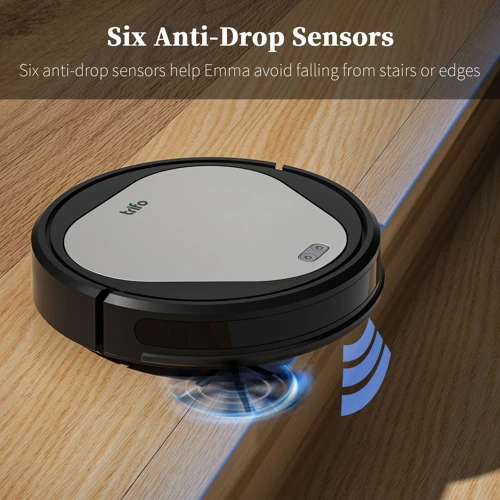
The drop sensors used in smart vacuum cleaners are crucial to prevent falls and damage. These sensors ensure that the vacuum cleaner doesn’t fall off stairs or ledges, avoiding costly repairs or injuries.
When the sensors detect a drop or a sudden change in altitude, they trigger the vacuum cleaner to change direction, slow down, or stop altogether. This prevents the vacuum cleaner from falling down stairs or off ledges, thereby avoiding potential damages.
These sensors enhance the safety of the environment in which the vacuum cleaner operates. For instance, in homes with pets, children, or disabled individuals, vacuum cleaners equip with drop sensors play a vital role in ensuring safety. These sensors can detect changes in the floor surface and trigger immediate action to prevent falls or disturbance.
The drop sensors, therefore, serve a critical safety function and must be present in any smart vacuum cleaner worth its salt. With drop sensors, vacuum cleaners can safely navigate the home, clean efficiently, and leave homeowners worry-free.
Drop sensors are an excellent example of how technology enhances our lives by providing safety and convenience. They allow homeowners to sit back, relax, and let the vacuum cleaner do its work without worrying about possible accidents or damaging property.
Drop sensors are instrumental in keeping smart vacuum cleaners safe to operate, reducing potential damages, and ensuring homes are free from accidents. It’s no wonder these sensors are becoming common features in most modern vacuum cleaners.
Limitations of Drop Sensors
While drop sensors are a crucial element in smart vacuum cleaners for detecting areas to avoid, they come with their share of limitations. It’s important to understand these limitations to get the most out of your device. However, these limitations might pose some perplexing issues for users, including false positives and difficulty maneuvering around uneven surfaces or dark floors. Let’s take a closer look at some of the limitations of drop sensors and how you can work around them.
False Positives
False positives refer to instances when a drop sensor is triggered when there is no actual drop or danger of falling. This is a common issue with many drop sensors in smart vacuum cleaners and can cause a lot of inconvenience to users. The primary cause of this problem is the inability of the sensor to differentiate between a real drop and a small uneven surface or a change in lighting.
Table: Common Causes of False Positives
| Cause | Description |
|---|---|
| Reflective surfaces | Sensors may trigger when they detect a reflection on the floor, mistaking it for a drop. |
| High-pile carpets and rugs | The sensor may mistake high-pile carpets and rugs for a drop, leading to unnecessary stops and delays in cleaning. |
| Low lighting conditions | Drop sensors rely on light to detect drops, and in low-light conditions, they may trigger false positives. |
| Transparent floors | Certain types of drop sensors, such as infrared sensors, may not work on transparent floors, leading to false positives. |
To solve this issue, manufacturers are now incorporating multiple sensors into their products, including infrared sensors and cameras, which work together to make sure that the robot vacuum doesn’t stop unnecessarily. Additionally, some newer models of robot vacuums use advanced algorithms that can differentiate between a real drop and a change in floor height caused by a small obstacle or rug.
Despite these improvements, false positives are still an issue in many smart vacuum cleaners, and users must be aware of the limitations of the technology. It is essential to ensure that the environment in which the robot operates is free of objects that could trigger the sensors unnecessarily, and to understand the various causes of false positives. Ultimately, the goal is to produce a smart vacuum cleaner that can operate autonomously without causing any inconvenience to the user.
Uneven Surfaces
When it comes to using drop sensors in smart vacuum cleaners, uneven surfaces can present a challenge. Drop sensors generally operate based on a pre-set distance to the floor, and if the surface is uneven it may not detect a drop-off in the same way it would on a flat surface. This can result in false negatives where the vacuum cleaner fails to register a drop-off, and attempts to continue cleaning, which can lead to falls and damage to the vacuum cleaner itself.
There are a few strategies that manufacturers use to mitigate this challenge in drop sensors. One approach is to use multiple sensors placed at different points along the body of the vacuum cleaner, which can help to detect drops that might be missed by a single sensor. Additionally, some manufacturers have developed drop sensors that are able to adjust their sensitivity to uneven surfaces in real time, which can provide a more accurate picture of drops and drops-offs on any kind of surface.
Despite these advancements, however, uneven surfaces remain a challenge for drop sensor-based cleaning technologies and there is still work to be done in developing effective solutions to this issue. For now, it is important for users to be vigilant when running their smart vacuum cleaners on uneven surfaces and to monitor the performance of the drop sensors closely to avoid potential falls and damage.
To summarize, the problem of uneven surfaces for drop sensor-based smart vacuum cleaners is complex and requires careful consideration. While manufacturers have developed some strategies for addressing this challenge, further research and development is needed to create more robust and reliable drop sensor technologies that can operate effectively on all types of surfaces.
Dark Floors
Even though drop sensors are an essential safety feature in smart vacuum cleaners, they have some limitations. One of the challenges is detecting dark floors, which can be problematic for certain types of drop sensors. Dark floors can confuse infrared sensors, which use infrared light to detect changes in color and texture on the floor.
Infrared Sensors work by emitting infrared light and measuring the intensity of the reflected light to determine the distance from the vacuum cleaner to the floor. Dark floors absorb more infrared light, which makes it difficult for the sensors to detect the distance accurately. As a result, smart vacuum cleaners with infrared sensors may ignore dark surfaces, assuming them to be a drop-off zone.
Another type of sensor that can be affected by dark floors is camera-based sensors. These sensors use cameras to capture images of the environment and use them to detect the edges of the floor. However, dark floors may not reflect enough light for the cameras to capture an accurate image. This can cause issues with incorrect floor mapping and pathfinding.
The performance of drop sensors in smart vacuum cleaners may be limited by dark floors. Smart vacuum cleaners that rely on infrared sensors or camera-based sensors may miss parts of a room or even avoid certain areas altogether. It’s important to choose a vacuum cleaner that uses a combination of different types of sensors and navigation technologies, such as cliff sensors and Ultrasonic Sensors, to ensure optimal performance on all surfaces.
Here is a table summarizing the impact of dark floors on different types of drop sensors:
| Drop Sensor Type | Impact of Dark Floors |
|---|---|
| Mechanical Sensors | No impact |
| Infrared Sensors | May ignore dark floors, assuming them to be a drop-off zone |
| Camera-based Sensors | May have issues with incorrect floor mapping and pathfinding |
| Ultrasonic Sensors | No impact |
| Cliff Sensors | No impact |
While drop sensors have some limitations, they are still a vital component of smart vacuum cleaners that prevent falls and damage to the device. It’s important to understand the types of sensors and their limitations to ensure the overall performance of smart vacuum cleaners.
Conclusion
In conclusion, drop sensors have revolutionized the way smart vacuum cleaners operate. The ability to detect drops and cliffs prevents the vacuum cleaner from falling off and damaging itself, as well as potential damage to furniture or other objects. With the use of various types of drop sensors, including mechanical, infrared, camera-based, ultrasonic, and cliff sensors, smart vacuum cleaners are now able to navigate through various types of surfaces and detect obstacles.
However, like any technology, drop sensors have their limitations. False positives can occur, which means the vacuum cleaner may stop cleaning even though there is no actual drop or cliff. Uneven surfaces and dark floors may also prove difficult for the sensors to detect.
Despite the limitations, drop sensors have come a long way and continue to improve. As technology advances, we may see even more advanced and sophisticated sensors that may eliminate these limitations altogether.
As for the future of smart vacuum cleaners, it’s clear that drop sensors have played a significant role in their success. It’s exciting to think about what other technological advancements may be on the horizon to make cleaning our homes even easier and more efficient. Overall, drop sensors have been a game-changer in the world of cleaning technology and have paved the way for even more innovative and high-tech solutions to come.
Frequently Asked Questions
What is the purpose of drop sensors in smart vacuum cleaners?
Drop sensors help prevent the vacuum cleaner from falling off ledges and stairs, which could cause damage to the device and pose a safety hazard.
How do mechanical drop sensors work?
Mechanical drop sensors use a lever and wheel system to detect changes in the vacuum’s angle. When the vacuum leans too far in one direction, the lever triggers the wheel to stop and reverse direction.
What are infrared drop sensors?
Infrared drop sensors emit an infrared beam of light and detect how much of the beam reflects back. If a surface is too dark, the sensor will not detect a reflection and assume there is an edge or drop.
How are camera-based drop sensors different from other types?
Camera-based drop sensors use onboard cameras to detect and track the position of edges and drop-offs. This technology provides greater accuracy and eliminates some of the limitations of other sensor types.
Can drop sensors detect all types of surfaces and edges?
No, some types of surfaces, such as dark floors or black carpets, may cause inaccuracies in drop sensor readings. Additionally, some edges may be too steep or small to trigger the sensor.
What happens if a vacuum cleaner falls down a drop or staircase?
If a vacuum cleaner falls down a drop or staircase, it may sustain damage to its internal components, such as the motor or battery. In some cases, the device may become irreparably damaged.
Are there any other benefits to using drop sensors in smart vacuum cleaners?
Yes, drop sensors also help the vacuum cleaner navigate around furniture and other obstacles. By detecting edges and drops, the device can avoid collisions and obstacles.
What are the limitations of ultrasonic drop sensors?
Ultrasonic drop sensors may not work effectively in noisy environments or with certain types of surfaces, such as glass or transparent materials. They may also be affected by interference from other ultrasonic sources.
Can drop sensors be replaced or repaired if they malfunction?
In most cases, drop sensors can be replaced or repaired by a professional technician. However, it is important to have the device serviced by a trained professional to avoid causing further damage.
Do all smart vacuum cleaners use drop sensors?
No, not all smart vacuum cleaners use drop sensors. Some devices may use other types of sensors, such as proximity or obstacle sensors, to navigate around obstacles and avoid edges and drops.
